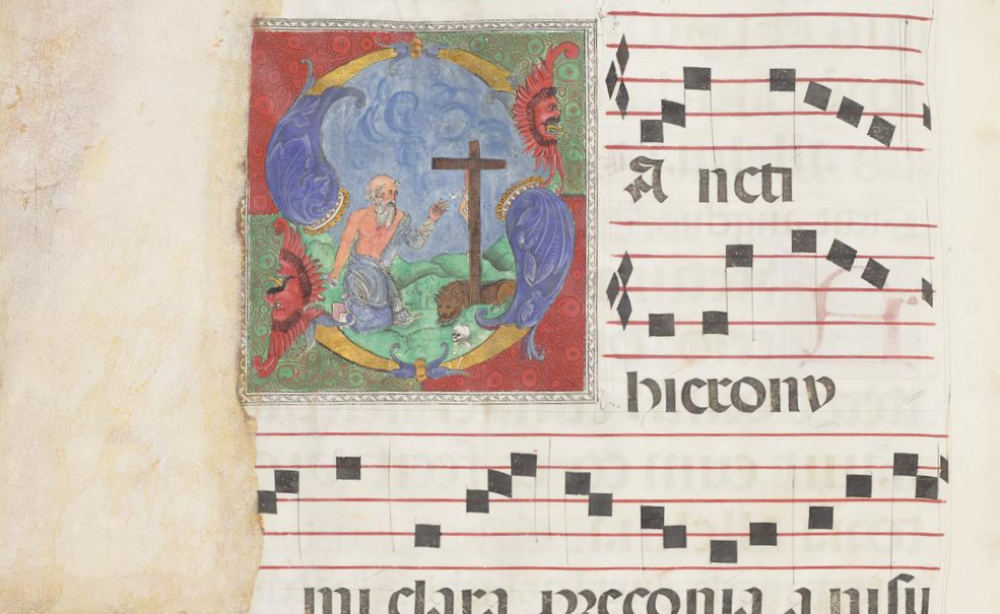Thirty-nine manuscript choir books containing musical notations from the monastery of Belém are now known. Some have an uncertain origin. Twenty-seven are kept in the Biblioteca Nacional de Portugal and twelve in the Free Library of Philadelphia, thanks to a donation by the widow of the collector and art lover John Frederick Lewis (1860-1932). The oldest manuscripts date from the end of the fifteenth century and the most recent from the eighteenth century, which suggests they were copied at various times. It is possible that not all the manuscripts were initially made for the monastery of Belém. This collection is older but more heterogeneous than the Escorial collection, which was commissioned by Philip II and produced between 1577 and 1586. This comparison is relevant because the two royal pantheons probably had comparable cults in terms of magnificence. These manuscripts are essentially singing books, antiphonaries and graduals for the Office and the Mass.
Catalogues:
Isabel Vilares Cepêda, Manuscript catalogue of the choir books kept in the Music department of the Biblioteca Nacional de Portugal, available in this department (Música).
Edwin Wolf, A Descriptive Catalogue of the John Frederick Lewis Collection of European Manuscripts in the Free Library of Philadelphia, Philadelphia, The Free Library, 1937.
Lisbon, Biblioteca Nacional de Portugal:
– L.C. 243: Manuscript from the first half of the sixteenth century, containing two books: 1- Kyriale and Gradual (?) for the Marian feasts and the Temporale; 2- Gradual.
– L.C. 244: Gradual (Sanctorale), second quarter of the sixteenth century.
– L.C. 246: Antiphonary (Sanctorale) partly notated, second quarter of the sixteenth century.
– L.C. 255 (solidary of LC 256): Antiphonary (Temporale), 1475-1500.
– L.C. 256 (solidary of LC 255): Antiphonary (Temporale), 1475-1500.
– L.C. 257: Antiphonary (temporale, summer), 1475-1500.
– L.C. 258: Hymnary, 1475-1500.
– L.C. 259: Antiphonary, 1475-1500.
– L.C. 260: Antiphonary, first quarter of the sixteenth century.
– L.C. 261: Antiphonary (Temporale from Epiphany to the first Sunday of Lent), second quarter of the sixteenth century.
– L.C. 264: Antiphonary-Gradual-Hymnary, 1545 with additions from the seventeenth century.
– L.C. 265: Kyriale, first half of the sixteenth century.
– L.C. 266: Gradual (Temporale from the first Sunday of Advent to Epiphany), sixteenth century.
– L.C. 267: Gradual (Temporale from Epiphany to the Ember Days of Lent), sixteenth century.
– L.C. 268: Gradual (Temporale from the second Sunday of Lent to the Saturday after Passion), sixteenth century.
– L.C. 269: Gradual (Temporale from Lent to Trinity), 1540-1550.
– L.C. 271: Gradual (Common of saints), sixteenth century.
– L.C. 272: Gradual (Sanctorale), sixteenth century.
– L.C. 273: Psalter-Hymnary, 1544.
– L.C. 276: Antiphonary (main feasts of the Temporale), sixteenth century.
– L.C. 277: Antiphonary (Paschal Triduum), sixteenth century.
– L.C. 278: Antiphonary (Common of saints), sixteenth century.
– L.C. 279: Antiphonary (Sanctorale), sixteenth century.
– L.C. 280: Antiphonary (Sanctorale), sixteenth century.
– L.C. 281: Office and Mass for the deaths-Gradual, sixteenth century.
– L.C. 330: Offices-Mass and Office for the deaths-Kyriale.
– L.C. 332: Mass and Office for the deaths, fifteenth century?
Philadelphia, Free Library of Philadelphia, Rare Book Departement :
– Lewis E 221: Antiphonary (Sanctorale), June 1548, rector of the College of Coimbra (colophon, f. 183v).
– Lewis E 223: Antiphonary (Temporale), middle of the sixteenth century.
– Lewis E 224: Antiphonary, seventeenth century?
– Lewis E 225: Gradual (Temporale), middle or end of the fifteenth century.
– Lewis E 226: Gradual (Sanctorale and Common of Saints), middle of the sixteenth century.
– Lewis E 227: Breviary? (Common of Apostles and Common of Evangelists), 1787.
– Lewis E 228: Antiphonary (Sanctorale), second half of the sixteenth century or seventeenth century?
– Lewis E 229: Gradual (Sanctorale), middle of the sixteenth century.
– Lewis E 230: palimpsest Hymnary, seventeenth century? and end of the fifteenth century for the older layer.
– Lewis E 232: miscellaneous, seventeenth century?
– Lewis E 233: Antiphonary (Common of Saints and Office of the Dead), middle of the sixteenth century.
– Lewis E 234: Antiphonary (Temporale), second half of the sixteenth century.
